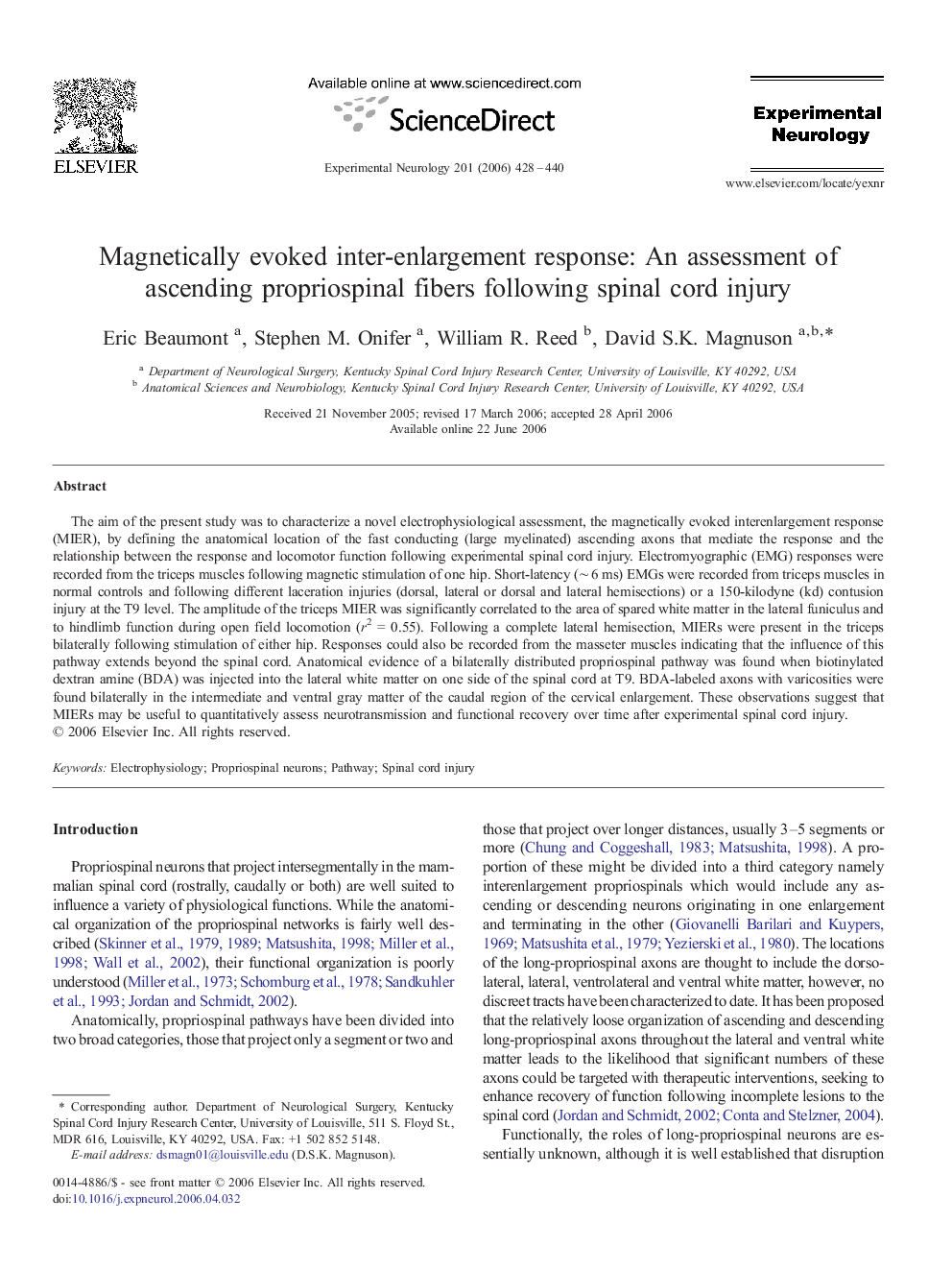| Article ID | Journal | Published Year | Pages | File Type |
|---|---|---|---|---|
| 3056998 | Experimental Neurology | 2006 | 13 Pages |
The aim of the present study was to characterize a novel electrophysiological assessment, the magnetically evoked interenlargement response (MIER), by defining the anatomical location of the fast conducting (large myelinated) ascending axons that mediate the response and the relationship between the response and locomotor function following experimental spinal cord injury. Electromyographic (EMG) responses were recorded from the triceps muscles following magnetic stimulation of one hip. Short-latency (∼ 6 ms) EMGs were recorded from triceps muscles in normal controls and following different laceration injuries (dorsal, lateral or dorsal and lateral hemisections) or a 150-kilodyne (kd) contusion injury at the T9 level. The amplitude of the triceps MIER was significantly correlated to the area of spared white matter in the lateral funiculus and to hindlimb function during open field locomotion (r2 = 0.55). Following a complete lateral hemisection, MIERs were present in the triceps bilaterally following stimulation of either hip. Responses could also be recorded from the masseter muscles indicating that the influence of this pathway extends beyond the spinal cord. Anatomical evidence of a bilaterally distributed propriospinal pathway was found when biotinylated dextran amine (BDA) was injected into the lateral white matter on one side of the spinal cord at T9. BDA-labeled axons with varicosities were found bilaterally in the intermediate and ventral gray matter of the caudal region of the cervical enlargement. These observations suggest that MIERs may be useful to quantitatively assess neurotransmission and functional recovery over time after experimental spinal cord injury.
